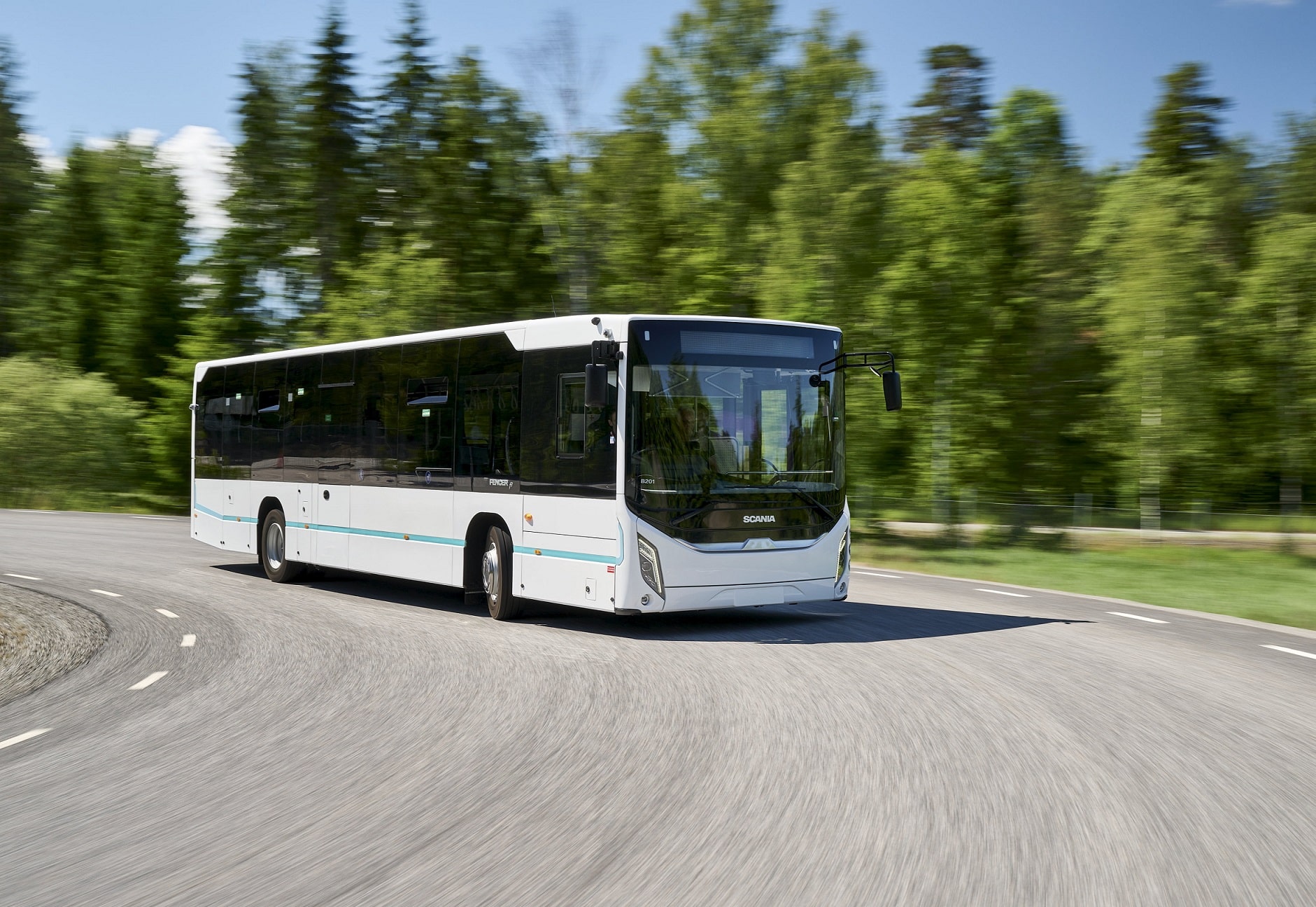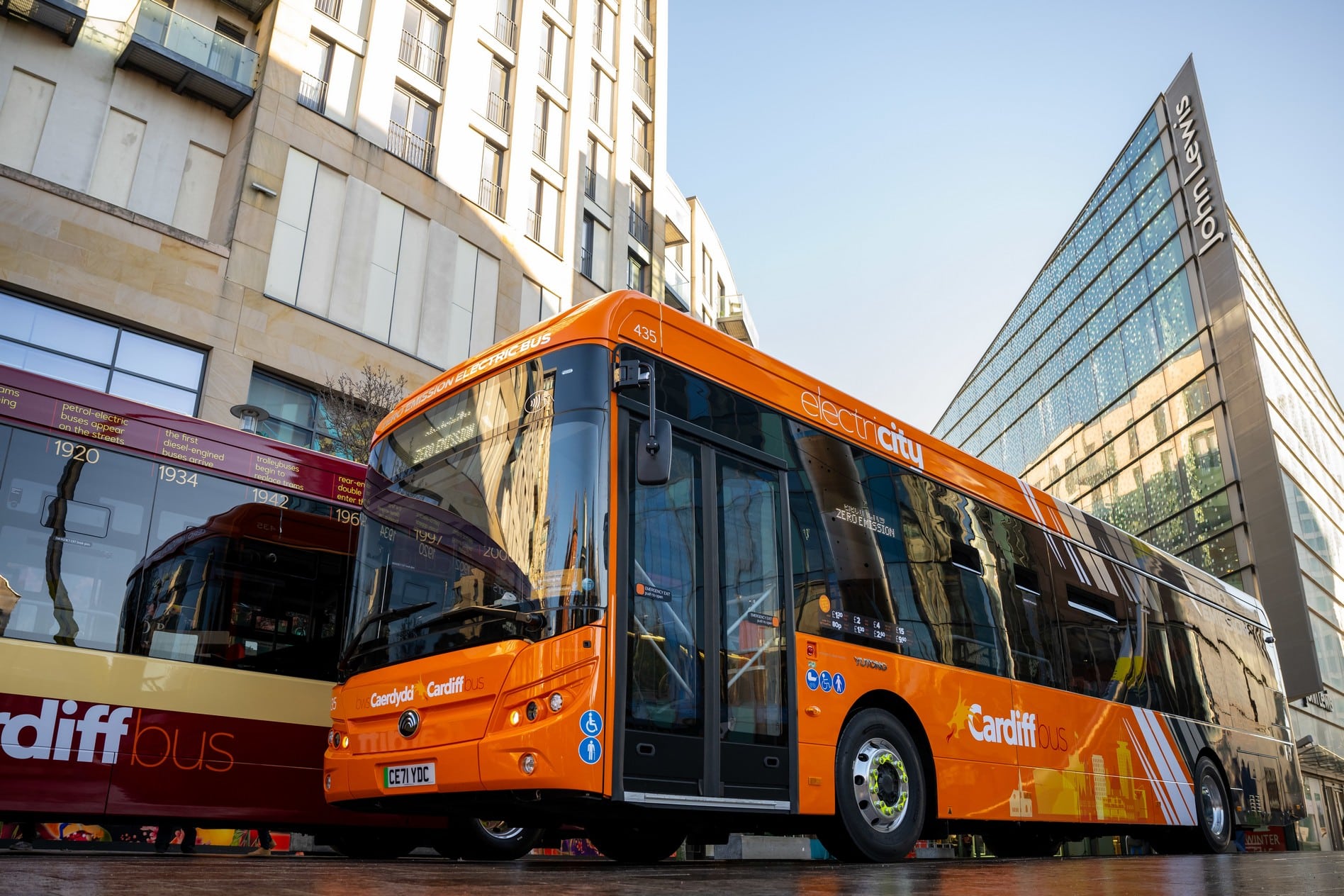The Scania Fencer f1 made its debut in 2021. That vehicle, built on the previous generation of chassis, was a proof-of-concept product and soon sold to PC Coaches of Lincoln. One of two subsequent 12.2m Fencer f1 models for the UK was also at Scania’s Sodertälje test track in June. Both of those utilise next-generation bus chassis and represent an advancement from the first example.
Higer builds the Fencer body in China. The more recent examples have lost the previous cosmetic ‘flashes’ above the wheels and they come with the DC09 engine at Euro VI step D. All diesel Fencers built for customers will be at Euro VI step E and have the ZF EcoLife 2 gearbox.
Battery-electric Scania Fencer f1 for UK in build
Scania UK currently has a 10.9m Fencer f1 in build. It is equipped with the 6.7-litre DC07 engine, which utilises a Cummins block, and is expected here towards the end of the year. Also due then is a 12.2m battery-electric Fencer f1 demonstrator. That bus will have Scania’s current driveline and batteries before a move to a platform that utilises Northvolt cells takes place ahead of production deliveries from early 2024.
That shift has been prioritised by Scania UK to deliver extensive commonality with the OEM’s nascent battery-electric truck and, later, coach range, says Sales Director Mark Oliver.
Mark adds that the Northvolt cells are part of a wider advancement, although items such as the motor and two-speed gearbox in the existing battery-electric Citywide will stay constant. One area where the Northvolt cells will be superior is in their energy density.

A zero-emission Fencer double-decker is part of the roadmap in the longer term.
Mark notes that the Scania battery-electric driveline is flexible, something that will help buses fitted with it to satisfy various applications. Axle ratios can be adapted, and so too can those in the two-speed gearbox.
Unlike a similar twin-ratio concept used by another vehicle OEM in the battery-electric sphere, Scania’s can start from stationary in either gear. One of its product specialists advises that during normal operation the higher of the two would remain selected, with the lower gear utilised when heavily loaded and heading uphill. In the taller ratio the bus will be capable of up to 62mph.
‘Retail ready’ stock also to be held by UK dealership
routeone had the opportunity to try both the latest diesel Fencer f1 for the UK and a left-hand drive battery-electric Citywide. The latter is a competent vehicle and suggests that when it arrives, the zero-emission Fencer will prove itself as a highly refined model. The prospect of driveline advancement when Northvolt battery cells debut tempts further.
On the diesel side, the bus tested is a 41-seater. Scania says it is up to 500kg lighter than the initial Fencer f1. It is equipped with rear-view cameras, although during homologation in June conventional mirrors were also fitted before being removed.
Scania UK sees the Fencer as suiting both fleet and retail customers. It anticipates keeping stock of ‘retail ready’ models with seatbelts. In addition to conventional layouts, two- and three-door format will be available alongside an airport-specific configuration. Some of the latter have already been ordered and they will come with optional air-conditioning.



























